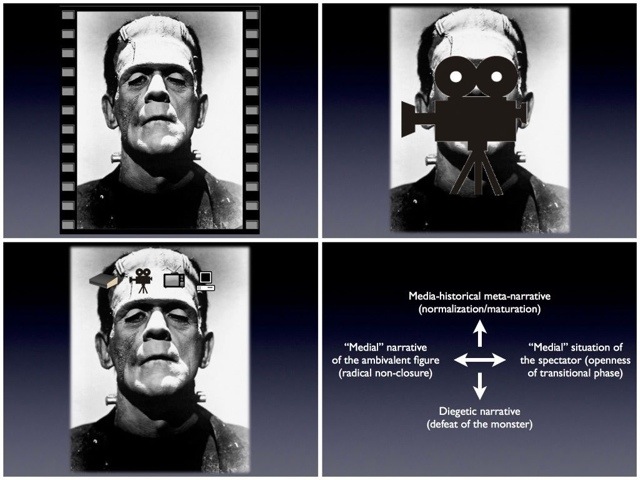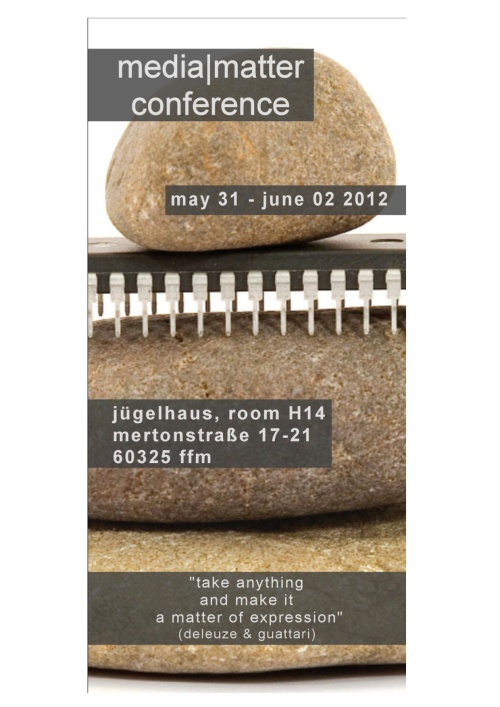Watching election night coverage last night, I was struck by how commonplace a variety of presentation, visualization, and interfacing technologies have become in comparison to the last election four years ago, when many of these things were introduced and foregrounded — often somewhat awkwardly, as the videos here demonstrate. The shift has a great deal to do with much broader processes of habitualization through which touchscreen devices such as smartphones and tablet computers have been domesticated, de-exoticized, and rendered unspectacular in the intervening years. Taken for granted now as so much furniture of the lifeworld, it’s easy to lose sight of how fast these processes transpire, and of how differently things looked just a few years ago. In the interest, then, of cultivating a sort of media-archaeological awareness of the inherent transitionality and instability of our experiential and affective relations to the media-technical infrastructure of our lives, I’m posting here some glimpses from another world — several relevant video clips from the last presidential election night, along with some observations I originally posted the day after, on November 5, 2008:
America’s biggest media events, the Superbowl and the presidential election, are not simply mediated events but, centrally, events of mediation: showcases for new media technologies. This is a wonderful example. If I didn’t have a dissertation to write [update 2012: glad I’m done with that!], I’d be writing an article about CNN’s Virtual View (which is self-consciously placed “in the tradition of Princess Leia”). Watch them navigate between an ostensible story and a heightened awareness of the state-of-the-art special-effects. This is sci-fi, and not just because the “hologram” looks like something from Star Wars or because it seems to “beam” the correspondent in the style of Star Trek. This is sci-fi in a richer sense, because it perfectly utilizes the sci-fi film’s basic self-reflexive appeal to the technologies used to mediate its highly conventionalized story about technology.
Of course, the appearance of CNN’s holograph is not an isolated phenomenon. It partakes of a larger science-fiction context. The report of astronauts voting is a good example. Not only is outer space the traditional setting, the astronaut an established character, and the spaceship a central iconographic element in sci-fi; more importantly, the report provokes the question, as I asked last evening, how exactly did they cast their votes? With what kind of apparatus, via what channel of communication, and with what security measures in place? These are the same questions that one can ask about one’s local voting station: how do these new voting machines work, how do they communicate with one another, and are they trustworthy? The astronauts casting their votes are not interesting in themselves. Instead, they are an invitation to regard the apparently more mundane situation of earthbound voting from a technophilic, science-fiction perspective.
Meanwhile, the other networks foregrounded gigantic touchscreens, double ticker text lines, made-for-HDTV special features, and parallel online supplements in their bids to captivate viewers (see here for more). Since I couldn’t stay awake for it, I’ll be loading Obama’s victory speech (and maybe McCain’s concession of defeat while I’m at it) onto my iPod. Watching it there will in some way consummate the message of the medium, and I anticipate that it will also speak to a level at which consummation is eternally deferred: Now if I only had an iPhone or an iPod touch to match the tactile response, if not the scale, of those giant touchscreens [update 2012: the iPad had not been released yet…]. Isn’t that what this election was all about?


